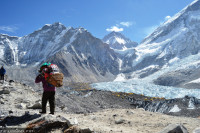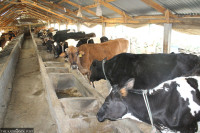Money
Nepali rupee going strong; hits 20-month high against dollar
Nepali rupee has strengthened to a 20-month high against the US dollar, as the Indian currency, with which Nepali currency is pegged, gained weight after the Indian central bank decided not to change its policy rate.
Nepali rupee has strengthened to a 20-month high against the US dollar, as the Indian currency, with which Nepali currency is pegged, gained weight after the Indian central bank decided not to change its policy rate.
Nepali rupee will open for trading at 103.01 a dollar on Saturday, up 1.05 than on Friday, shows the foreign exchange reference rate fixed by the Nepal Rastra Bank (NRB). This rate is the highest since August 11, 2015 when each US dollar was traded at the same level of Rs102.38.
Hike in the value of Nepali currency comes on the back of strength gained by the Indian rupee. Indian rupee opened at 64.70 a dollar on Friday and touched a high of 64.16 during intraday trading before closing at 64.28.
The Indian rupee hit a more than one-and-a-half-year high on Friday after the central bank held its policy rate and expressed concerns about inflation, raising expectations it would no longer cut rates this year, Reuters said.
The Indian central bank kept repo rate unchanged at 6.25 percent on Thursday and raised its inflation forecasts, indicating it could even tighten monetary policy should consumer prices surge. The Reserve Bank of India (RBI), meanwhile, raised the reverse repo rate to 6 percent from 5.75 percent, as fears of excess liquidity exerting upward pressure on prices grew.
“We do not expect any more rate cuts given the journey to 4 percent inflation remains challenging. Yet we believe that weaker than expected growth will not allow the RBI to start increasing the policy repo rate over 2017,” HSBC said in a note to clients.
Despite this, Indian rupee is expected to gain weight, as Parliament is likely to endorse Goods and Services Tax (GST) Bill, which could boost foreign inflows, according to an Angel Broking report. Also, uncertainty in US President Donald Trump’s fiscal policies will exert downward pressure on the greenback, prompting the Indian rupee to gain strength, the report said.
The Indian rupee has gained 5 percent so far this year, while foreign institutional investors have bought $6.86 billion and $5.35 billion from local equity and debt markets, respectively, according to LiveMint.Hike in value of the Indian rupee automatically makes Nepali rupee stronger, because Nepali currency is pegged with Indian rupee at 1.6.
A stronger Nepali rupee tends to reduce the country’s import bill, because Nepali traders will have to spend less while buying US dollars—a currency in which payments of foreign trade are made. This may ultimately reduce inflationary pressure because of Nepal’s growing reliance on imported goods.
A stronger currency, however, will not benefit recipients of remittance here, as they will get less Nepali rupee while exchanging money sent by those working abroad. A stronger currency will also hit exporters, as foreigners will get less of local currency for each dollar they exchange to purchase goods and services in Nepal.




 10.12°C Kathmandu
10.12°C Kathmandu













